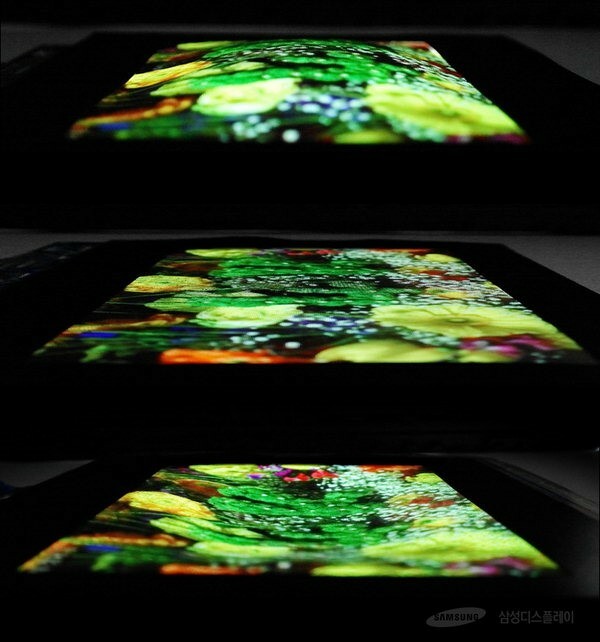With the success of the Galaxy Z Fold 3 and Flip 3, Samsung has established themselves as a force to be reckoned with in the display tech scene. Constantly pushing the boundaries with foldable and rollable displays, we often wonder what they will do next.
During Samsung‘s presentation in last week’s Global Tech Korea 2021 event, they showcased their latest attempt at a stretchable display. As seen in the video below, the 13-inch OLED display moves vertically to turn the 2D display into a dynamic 3D surface.
The video shows magma flowing slowly, with the screen movements looking almost cloth-like. It doesn’t look perfectly natural yet, but it is certainly still impressive and exciting to see.
This isn’t the first time Samsung showed such a concept. Back in 2017, Samsung unveiled a proof-of-concept 9.1-inch stretchable AMOLED display. This version was based on Low-Temperature Polycrystalline Silicon (LTPS) display technology, but could only deform in the center.
Jumping a few years ahead, their new 2021 version has improved significantly from the 5% of deformation it could take in the past. The new display is also much larger being 13-inches and can deform in different places throughout the display. It is unclear whether or not the new display uses the same LTPS technology.
According the Samsung, some possible applications of this display could be on wearables, in the automotive industry, or even for entertainment and movies. Some have theorised that it could be used to make on-screen keyboards more responsive and tactile for the visually impaired.
Samsung was able to turn the foldable phone into a useable and viable product in just three iterations, so I wonder when this stretchable technology will make its way into mainstream tech products. What do you think? Do you think stretchable displays will be the future of screen technology?
[ SOURCE ]










